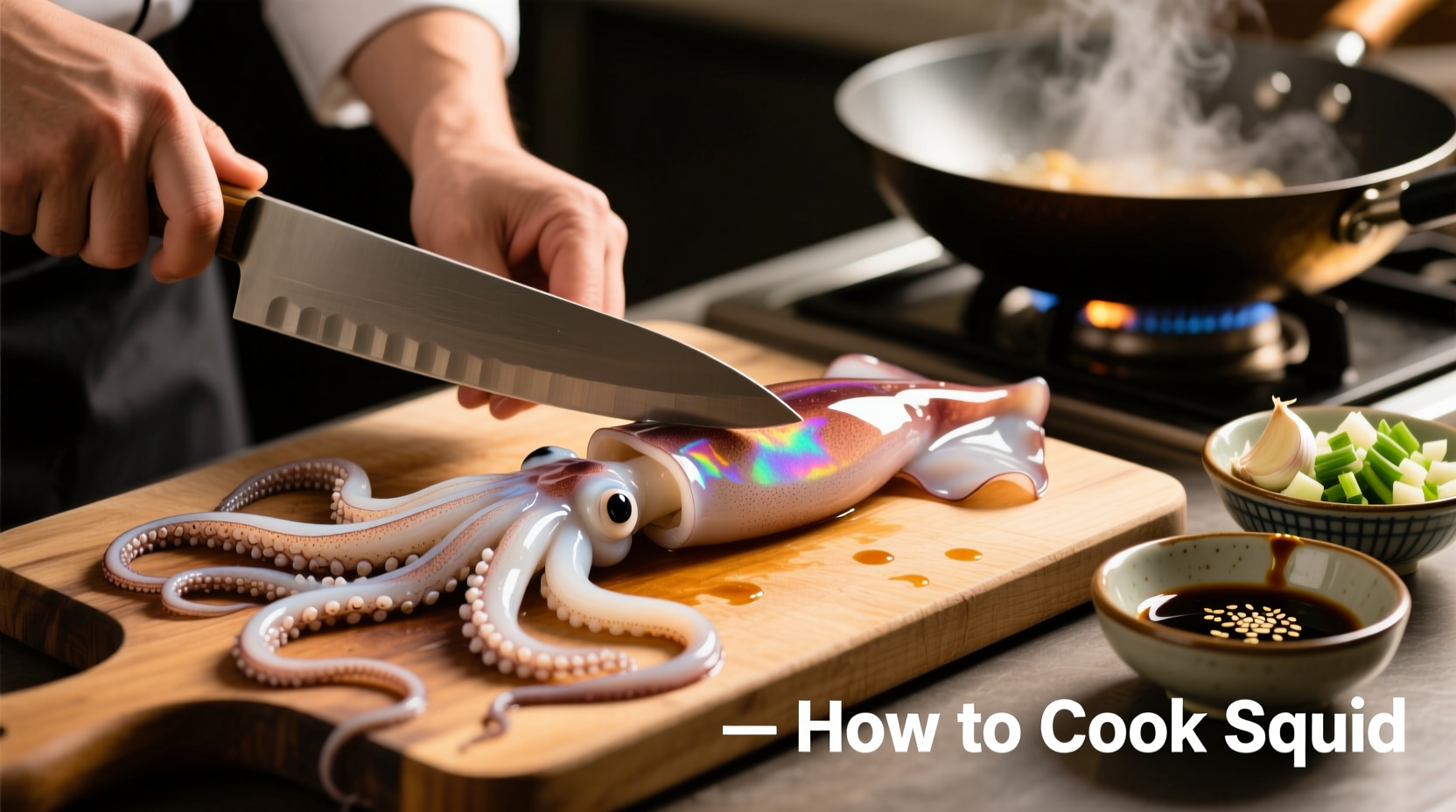Why Most People Fail at Cooking Squid (And How to Succeed)
Many home cooks avoid squid because they've experienced rubbery, chewy results. The secret lies in understanding squid's unique protein structure. Squid contains collagen that either cooks quickly at high heat (2-3 minutes) or slowly at low heat (30+ minutes). There's no middle ground - that's why your squid turns rubbery when cooked moderately.
Your Squid Cooking Roadmap: From Market to Plate
Follow this practical sequence that mirrors your actual cooking journey:
Step 1: Selecting Quality Squid
Fresh squid should smell like the ocean (not fishy), have clear eyes, and feel firm to the touch. According to FDA seafood guidelines, squid is low in mercury compared to many fish, making it safe for regular consumption. Frozen squid works well too - just thaw in the refrigerator overnight.
Step 2: Cleaning Squid in 5 Minutes (No Special Tools Needed)
- Remove the head and tentacles by gently pulling them away from the body
- Separate the beak from the tentacles (squeeze at the base to pop it out)
- Peel off the thin skin from the body tube
- Remove the clear quill (plastic-like backbone) from inside the tube
- Rinse everything under cold water

Step 3: Tenderizing Techniques That Actually Work
Professional chefs use these proven methods to ensure tender squid:
- Physical tenderizing: Score the inside of squid tubes in a crosshatch pattern
- Acid marinade: Soak in buttermilk or lemon juice for 30 minutes
- Dairy soak: Milk or yogurt breaks down proteins gently
- Freezing: Some studies show frozen squid cooks more tender (Journal of Food Science)
Step 4: Choosing Your Cooking Method
| Cooking Method | Temperature | Time | Best For |
|---|---|---|---|
| Pan-searing | High (400°F/200°C) | 2-3 minutes | Tender results, restaurant-style |
| Grilling | Medium-high | 2-3 minutes per side | Smoky flavor, char marks |
| Deep frying | 375°F (190°C) | 2-3 minutes | Crispy calamari |
| Braising | Low simmer | 30-45 minutes | Stews, tomato-based dishes |
Step 5: Three Foolproof Squid Recipes
Perfect Pan-Seared Squid with Garlic and Lemon
Dry squid thoroughly. Heat olive oil in cast iron skillet until smoking. Add squid in single layer (don't overcrowd). Cook 90 seconds per side until opaque. Finish with minced garlic, lemon juice, and parsley. Pro tip: Never move squid while cooking - let it develop proper sear.
Classic Calamari Fritti
Combine 1 cup flour, 1 tsp baking powder, 1/2 tsp paprika. Dip cleaned squid in buttermilk, then flour mixture. Fry at 375°F for 2-3 minutes until golden. Drain on paper towels. Serve with lemon wedges and aioli.
Mediterranean Braised Squid
Sear squid first, then transfer to pot with tomatoes, onions, olives, and white wine. Simmer covered for 35 minutes until tender. The slow cooking method transforms tough squid into melt-in-your-mouth perfection.
Step 6: Avoiding Common Squid Mistakes
Based on culinary research from the Culinary Institute of America, these errors cause rubbery squid:
- Overcooking: Even 30 seconds too long makes squid tough
- Wet squid: Always pat dry before cooking for proper sear
- Crowded pan: Causes steaming instead of searing
- Wrong temperature: Medium heat creates the rubbery zone
When to Choose Quick vs. Slow Cooking Methods
Understanding these context boundaries prevents cooking disasters:
- Use quick cooking when you want tender-but-chewy texture (like restaurant calamari)
- Choose slow cooking when making stews or tomato-based dishes
- Avoid medium heat cooking - it's the danger zone for rubbery squid
- Fresh squid works best for quick methods; frozen can be good for slow cooking
Squid Cooking Timeline: From Prep to Plate
This visual timeline shows the critical points in squid preparation:
- 0-5 min: Cleaning squid (do this right after purchase)
- 5-35 min: Optional tenderizing (marinating or scoring)
- 35-40 min: Quick cooking method (high heat, 2-3 minutes)
- 35-75 min: Slow cooking method (low heat, 30+ minutes)
- 75-80 min: Resting and serving (squid continues cooking off-heat)
Food Safety and Sustainability Tips
Follow FDA seafood handling guidelines: keep squid refrigerated below 40°F (4°C) and cook to an internal temperature of 145°F (63°C). For sustainability, look for squid with MSC certification. According to NOAA Fisheries, U.S.-caught squid is generally well-managed and sustainable.
Troubleshooting Your Squid Results
Already cooked squid that turned out rubbery? Try these fixes:
- Overcooked quick-method squid: Slice thinly and add to salads where chewiness works
- Undercooked squid: Return to high heat for 30-60 seconds
- Bland flavor: Toss with garlic-infused olive oil and lemon zest
- Soggy fried calamari: Re-crisp in air fryer at 350°F for 2 minutes











 浙公网安备
33010002000092号
浙公网安备
33010002000092号 浙B2-20120091-4
浙B2-20120091-4